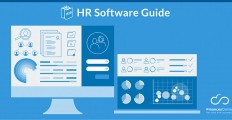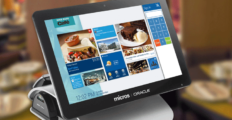It is from the dreams of entrepreneurs that economies are built. As the foundation of any economy, business owners are the lifeblood of any progressive society. They are the ones who create new streams of income, add value to the national income, realize social change, and drive community development. COVID-19 may have put a damper on the global economy, but given the entrepreneurs’ resiliency, they are bound to outlast the global pandemic.
We’ve collected over a hundred entrepreneurship statistics for you to understand the state of the sector as well as where the industry is headed in the future. Moreover, with these valuable data, you’ll know how small businesses are thriving in the digital economy.

Entrepreneurship Statistics Table of Contents
1. Entrepreneurship Market General Statistics
According to the US Small Business Administration, a small business is an organization with fewer than 500 employees (SBA). This definition makes a wide array of types of entrepreneurial pursuits. From bricks-and-mortar stalls to plumbing services and street food vending, small businesses are everywhere. Here are some key entrepreneurship market size figures:
Economic Impact
- There are 31.7 million small businesses in the US, accounting for 99.9% of all businesses (SBA, 2020).
- Meanwhile, the US has 20,139 large businesses (SBA, 2020).
- In 2017, for the first time in a decade, a majority of small firms—53%—report increases in revenues (NSBA, 2017).
- From 2000 to 2019, small businesses generated 10.5 million jobs, nearly twice more than that of large businesses (5.6 million) (SBA, 2020).
- Small businesses make up 47.1% of all private-sector employees (SBA, 2020).
- Small businesses account for 65.1% of new jobs created (SBA, 2020).
- 47.1% of the entire American workforce is employed in small businesses (SBA, 2020).
- 54% of small business owners worry about finding hires with great talent (Salesforce, 2018).
- 26% of business owners find it difficult to find qualified employees; 22% fail to do so (NFIB, 2020).
- It takes 5 days to start a business in the UK, 5 days in Belgium, 4 days in the US, 2 days in Australia, 2 days in Canada, 2 days in Singapore, and only 1 day in New Zealand (World Bank, 2021).
- Personal funds are the most common source of small business capital at 64.4%, followed by a business loan from a bank/financial institution (16.5%), credit cards (9.1%), and family assets (8.4%) (SBA, 2020).
- As of August 2020, more than 163,000 businesses closed in the US due to COVID-19, of which 60% are permanently shut down (CNBC, 2020).
- Around 10,000 more stores could close in 2021 due to the pandemic (CNBC, 2021).
About Employees
- US small businesses generated 1.6 million new jobs in 2019 (SBA, 2020).
- As of 2020, small businesses employ a total of 60.6 million workers (SBA, 2020).
- This is despite the fact that 81% of small businesses in the US have no employees (SBA, 2020).
- 10.5% of all employees in the private sector work in a microbusiness (SBA).
- The US has a 4.4% job openings rate versus a 6.7% unemployment rate as of Q4 2020 (US Bureau of Labor Statistics, 2021; US Bureau of Labor Statistics, 2021).
- Most small business employees stay with their employers for 4 years or more. 37% remain on average, 8 years or longer (NSBA, 2017).
- 7.3 million people in the US are not part of the labor force but would want to be employed (US Bureau of Labor Statistics, 2021).
- 17% of entrepreneurs plan to add more employees. 21% raised employee salaries (NFIB, 2020).
- 21% of employers cite labor quality as the biggest business concern (NFIB, 2020).
- 27% of business owners have job openings for skilled laborers while 11% post openings for unskilled labor (NFIB, 2020).
- From 2012 to 2017, 37% of small-business owners have increased their part-time employees (NSBA, 2017).
Industry-Specific: US Manufacturing
- 43% of manufacturing employees are from small businesses (SBA, 2020).
- Of all US manufacturers, 89% cannot fill up their job openings (Deloitte, 2018).
- For 2019, the manufacturing sector contributed $2.33 trillion to the US economy (BEA, 2020).
- In the US, there are 592,574 manufacturing companies considered to be small businesses (SBA, 2020).
- Between 2018 and 2028, the skills gap may leave an estimated 2.4 million positions unfilled (Deloitte, 2018).
- Manufacturing accounts for 11% of the US economy (NAM, 2021).
Source: SBA 2020
Knowing these entrepreneurship data is crucial to help achieve profitability and success. One efficient way of managing your business information is by deploying some of the best business intelligence software. In today’s highly competitive environment and volatile economy, it really pays to use what you know to your advantage.
2. Small Business and Entrepreneurship Statistics
These entrepreneurship market research data show some key information about the ins and outs of starting and running a small business.
Business Startups
- The top motivation for someone to open their own business is that they’re ready to become their own boss (55%) (Guidant Financial, 2020).
- This is followed by the wanting to pursue his/her passion (39%), being dissatisfied with corporate America (25%). For some, it is because the opportunity presented itself (25%), they got laid off or outsourced (11%), they unprepared to retire (10%), and due to major life events (4%) (Guidant Financial, 2020).
- The best industries to start a business in 2018 are technology, health, energy, media, and consumer retail (Inc., 2018).
- Meanwhile, in 2020, industries with the most number of small business startups were business services (13%), retail (13%), construction and contracting (12%), residential and commercial services (9%), and food/restaurant (9%) (Guidant Financial, 2020).
- People who own a home are 10% more likely to become an entrepreneur versus those who don’t (Fundera, 2020).
- Having two founders increases the possibility of running a successful small business versus having one (Inc.).
- 69% of American entrepreneurs start their business at home (Small Business Trends, 2021).
- Most small employer small businesses are S-corporations (50.5%), C-corporations (24.8%), small proprietorships (12.9%), and partnerships (11.8%) (SBA, 2020).
- 64% of SMBs have a website, of which 94% are mobile-friendly (Review 42, 2021).
- 27% of SMBs are thinking of reducing their workforce due to COVID-19 (Business Wire, 2020).
- 31% of small businesses in the US were rendered non-operational by COVID-19 (Facebook Data for Good, 2020).
Financial Aspects
- 36% of small business owners cite “getting funding” as among the top three financial priorities (Quickbooks, 2020).
- 58% of entrepreneurs started with a minimum of $25,000 in 2019 (Small Business Trends, 2019).
- However, more recent studies show that 64% of small business owners start their firms with as low as $10,000 (Smallbizgenius, 2021).
- The median income of self-employed owners whose small business is incorporated is $51,816 (SBA, 2020).
- Meanwhile, the median income of owners whose small business isn’t incorporated is $26,084 (SBA, 2020).
- Overall, as of January 2021, the median income of small business owners is $65,476 (Payscale, 2021).
- Amid COVID-19, only 34% of small businesses reported being profitable, which is a huge drop from 2019’s 55% (Small Business Trends, 2020).
- As of Q4 2020, 65% of small business owners believe that their company’s cash flow will be very good or somewhat good in the next 12 months, 23% think it will be neither good nor poor, and 12% say that it will be somewhat poor or poor (Statista, 2020).
Demographics
- Female entrepreneurs in the US own 11.2 million businesses, of which 10.1 million are nonemployer firms and 1.1 million are employer firms (SBA, 2020).
- 41% of nonemployer small business owners and 20% of employer small business owners are women (SBA, 2020).
- Female-owned businesses generated over $1.9 trillion in revenues in 2019 (American Express, 2019).
- There is a 4% year-on-year increase of female business owners (Guidant Financial, 2020).
- 351,237 businesses in the US are owned by veterans (SBA, 2020).
- 31% of firms with employees are family-owned businesses (SBA, 2020).
- Immigrant owners account for 17% of businesses with employees (SBA, 2020).
- African-American women own 2.7% of all businesses (Fit Small Business, 2020).
- 35% of small business owners are in the 50-59 age bracket, the most common age range (National Business Capital & Services, 2020).
- Around 50% of businesses in the US are home-based (Fundera, 2020).
- About 1 in 20 businesses with employees in the US are franchises (SBA, 2020).
- 9.7% of employer firms in the US are owned by Asians (SBA, 2020).
- 5.6% of employer firms in the US are Hispanic-owned (SBA, 2020).

Starting a business is just half of the entire entrepreneurial journey. The other half is sustaining it. As competition continues to intensify in this market environment, you must ensure that you have the latest, necessary tools for small business to survive and thrive.
3. Marketing and Entrepreneurship Statistics
Today’s entrepreneurs know the value of using digital marketing strategies to survive and remain relevant. An effective marketing approach nowadays is leveraging the benefits of the best CRM tools for small businesses. Here are some key marketing and entrepreneurship figures:
Traditional Marketing
- The top marketing objective for every small business is to drive sales (Keap, 2019).
- 50% of entrepreneurs spend 2 hours/week on marketing (Ironpaper, 2018).
- 47% of small business owners handle their own marketing activities (Clutch, 2018).
- 55% of entrepreneurs are aware that their marketing efforts are effective, 33% do not know (Keap, 2019).
- 92% of business owners think that the most effective digital marketing technique is having a website (Ironpaper, 2018).
- 70-80% of consumers first look at small business product/service offerings (Blue Corona, 2019).
Digital Marketing
- 29% of small business owners don’t intend to use any form of digital marketing in 2019 (Keap, 2019).
- 49% of small business owners consider social media management as their primary marketing tool (Keap, 2019).
- 89% of entrepreneurs think that the most powerful digital marketing technique is search engine optimization (Ironpaper, 2018).
- 61% of small businesses spend on social media marketing campaigns (Clutch, 2018).
- Around 60% of third-party online stores/marketplaces experienced an increase of 64% in sales during the pandemic (UNCTAD, 2020).
- 28% of small businesses are selling more amid the pandemic, of which 94% credit COVID-19 for the sales increase (Quickbooks, 2020).
Tools used by small business for marketing
34% are still without any marketing tool or plan in place
Social media management: 49
Social media management
%Web analytics: 23
Web analytics
%CRM: 23
CRM
%SEO or digital advertising tools: 13
SEO or digital advertising tools
%Marketing automation: 7
Marketing automation
%None of the above: 33
None of the above
%Source: Keap's 2019 Small Business Marketing Trends Report.
Designed bySmall business owners must continue using social media and other digital marketing types in their marketing efforts. To ensure that every technology investment counts, it is suggested that the proper tools be used. For instance, it’s best to deploy only the top social media management solutions from reputable vendors.
4. Business Success and Entrepreneurship Statistics
Almost everything about starting and running a business is a risk. As such, there’s no such thing as a guarantee in entrepreneurship, perhaps, only the motivation and firm resolve of the entrepreneur. Everything else is unknown and uncontrollable. Here are some entrepreneurship statistics about business success and related subjects:
General Figures
- 28% of people who want to start a business admit that COVID-19 accelerated their plans (Quickbooks, 2020).
- 42% of gig workers have turned their side gigs into official businesses amid COVID-19 (Quickbooks, 2020).
- Small businesses account for around 50% of the US economy (US BEA, 2020).
- 82% of successful business owners never doubted themselves in terms of having the proper experience and qualifications to run a business (Small Business Trends, 2019).
- 72% of prospective business owners are optimistic about their upcoming venture amid the global pandemic (Quickbooks, 2020).
- Likewise, 42% of current business owners show optimism over the next 12 months despite COVID-19 (Quickbooks, 2020).
- In the fourth quarter of 2020, there were 1,115,984 business applications (US Census, 2021).
- The operations of 34% of small businesses are profitable despite COVID-19 (Small Business Trends, 2020).
- 31% of entrepreneurs have an associate degree; 30% finished high school; 18% obtained a master’s degree; 17% have a bachelor’s degree; and 4% claimed a doctoral degree (Guidant Financial, 2020).
Industry-specific
- Despite COVID-19, the professional and business services sector saw jobs increase by 161,000 in December 2020 compared to the previous month, especially in temporary health services (68,000), computer systems design (20,000), other professional and technical services (11,000), and company/enterprise management (11,000) (US Bureau of Labor Statistics, 2021).
- Around 60% of eCommerce companies and 70% of online third-party stores/marketplaces have seen increases in mobile payments (UNCTAD, 2020).
- The US retail industry added 121,000 jobs in December 2020, with supercenters and warehouse clubs (59,000), nonstore retailers (14,000), automobile dealers (13,000), health and personal care stores (10,000), and food and beverage stores (8,000) accounting for the largest growth (US Bureau of Labor Statistics, 2021).
- 86% of developed new products and services across various sectors as a result of COVID-19 (Quickbooks, 2020).

This entrepreneurship report highlights some important statistics on small business survival and longevity. Successful entrepreneurs tend to have a set of effective tools and effective practices. For one, they often deploy highly reliable productivity suite software to support employee productivity at the workplace.
Best Productivity Suite Software
- Wrike. This solution consolidates all your work, making it easy for you to track your team’s progress on projects. Find out how this software can improve your productivity in this Wrike review.
- monday.com. This platform promotes collaboration by streamlining the distribution of tasks and by providing teams with an interface reminiscent of a social media site. Discover other capabilities this solution has in our monday.com review.
- Slack. This messaging app allows team members to reach each other immediately for questions, clarifications, and task updates. Other than unifying communications, this software has other functionalities, which you can read more on in this Slack review.
- Asana. This is a popular choice for teams for managing projects because of its flexibility, enabling users to arrange goals, tasks, and other things as needed. Our Asana review offers more details about this app.
- ProjectManager. This cloud-based system provides you with real-time updates regarding your projects and allows you to map plans. You can examine this application further in our ProjectManager review.
5. Business Challenges and Entrepreneurship Statistics
Running a business is more about dealing with problems. As they say, starting and operating an enterprise is not for the faint of heart. Here are some key entrepreneurship growth rate statistics about business challenges that entrepreneurs must address:
Challenges
- According to Guidant Financial, the three biggest challenges small businesses face are the lack of capital, employee recruitment/retention, and marketing/advertising (Guidant Financial, 2020).
- 69% of small businesses had to increase their efforts on marketing due to the pandemic (Small Business Trends, 2020).
- 54% of businesses experienced an increase in web traffic since the COVID-19 lockdown began (Small Business Trends, 2020).
- The number of business applications in Q4 2020 decreased by 28.5% from the figure in Q3 2020 (US Census, 2021).
- 4.6 million people weren’t able to find jobs in December 2020 due to COVID-19 (US Bureau of Labor Statistics, 2021).
Business Failure
- The most important problems small businesses in the US face are quality of labor (21%), taxes (21%), government regulations (14%), poor sales (13%), competition from large enterprises (8%), and insurance cost/availability (8%) (NFIB, 2021).
- As of December 2020, 15.8 million people were able to report to work because their employer closed their business or downsized the company due to the pandemic (US Bureau of Labor Statistics, 2021).
- At the start of the COVID-19 lockdown period, 43% of small businesses in the US had to close (PNAS, 2020).
- It was worse in the Mid-Atlantic region, which includes New York City, where 54% of businesses had to close (PNAS, 2020).
- From January 4 to January 10, 2021, 1.5% of all US businesses had to permanently close a location while 3.8% were temporarily closed. Only 0.4% were able to open a previously closed location (US Census, 2021).
- A two-month loss in revenues would lead to closure for 17% of small businesses (Fed Small Business, 2020).
- 1 in 5 companies plans to reopen physical stores that were closed due to the pandemic (Bluehost, 2020).
Source: NFIB 2021
These entrepreneurship facts can be very helpful for would-be small business owners. If you’re a business owner, make sure you’re adequately equipped with today’s best technologies. For instance, if you want to ensure that your scarce resources are properly utilized, you need to have a reliable ERP platform, among other technology tools for small businesses.
6. Social Enterprise and Entrepreneurship Statistics
A new type of entrepreneurship that focuses more on helping society emerges. These social enterprise statistics will show that operating a business is no longer just about making money. Businesses are increasingly being evaluated based on how they relate with their employees, clients, and society.
US Social Enterprise Statistics
- Social enterprises that were prepared for the pandemic are 2.2 times more likely to pivot investments for the shifts in business demands (Deloitte, 2020).
- According to social entrepreneurs, the biggest factors in making remote work sustainable are the introduction of digital collaboration platforms (39%), flexibility in how work gets done (36%), establishing new scheduling and meeting norms (31%), investing in team leader training (24%), and providing home access to the internet and other relevant technologies (23%) (Deloitte, 2021).
- In 2020, 40% of applications to US social enterprises were targeted to the African Continent (Echoing Green, 2020).
- For social entrepreneurs, the most critical actions to transform work are to build an organizational culture that promotes growth (45%), building the capabilities of the workforce (41%), implementing new technologies (35%), establishing new work practices (31%), and restructuring the organization (22%) (Deloitte, 2021).
- 77% of social businesses consider citizenship and social impact as the main reasons they became social enterprises. (Deloitte, 2018)
- Before COVID-19, 43% of social enterprises were focused on single likely events. That changed during the pandemic, with 45% of social enterprises shifting their focus to multiple scenarios (Deloitte, 2021).
- 86% of millennials think that business success should not only be about making profits. It should also include the extent of service to society and the world at large. (Deloitte, 2018)
Social Enterprises Elsewhere in the World
- In the UK, there are over 470,000 social enterprises that employ 1.44 million people in 2017. (Department for Digital, Culture, Media & Sport, 2017)
- In 2017, 7% of all UK small businesses are social enterprises. They represent 68,000 small firms, $28.98 billion in revenue, and 800,000 in total employment (Department for Digital, Culture, Media & Sport, 2017).
- 40% of British social enterprises are led by women, 40% have a director with a disability, and 31% have Asian or minority ethnic directors (Social Enterprise UK, 2016).
- 3.2% of working-age individuals in 58 countries engage in social entrepreneurship (UN, 2020).
- 10.1% of working-age in Peru participate in social entrepreneurship activities (UN, 2020).
- In Australia, social enterprises account for 2-3% of the GDP, generating jobs for 200,000 people (UN, 2020).
- Within the next 10 years, social enterprises in Canada will generate up to 4% of GDP and will employ 500,000 Australians (UN, 2020).

These social entrepreneurship statistics indicate that millions are being employed to benefit society, wildlife, the environment, and other valuable causes. Non-profits are not exempt from being efficient and productive. One way to achieve efficiency is by deploying some of the best accounting software for non-profits, among other approaches.
Plan Your Entrepreneurship Strategy
Knowing statistics like these provide valuable insights into the colorful world of entrepreneurship. As more new small businesses join the fray, customers are likely to benefit more from the new ideas that fresh entrepreneurs bring. Furthermore, the entries give one a clear picture of the effects of COVID-19 on the economy and the industries that are flourishing amid the pandemic. Here are some of the important takeaways of this selection of entrepreneurship statistics.
- As a whole, small businesses bring the largest economic impact on any country.
- Entrepreneurship is one of the noblest and most exciting of human endeavors.
- Digital marketing is key to any entrepreneurial pursuit today.
- Business success can only be achieved after hurdling multitudes of risks.
- Failure in business should be taken as a motivation to be a better entrepreneur.
- A social enterprise should be the model for all businesses as it offers a genuine win-win approach.
Small businesses will continue to be the foundation of all countries across the world. If you’re an existing business owner–or are planning to be one–you should be very prepared to operate in this highly competitive market environment. You should have the best set of digital tools to address any type of risk to survive.
References:
- 2018 Deloitte and the Manufacturing Institute skills gap and future of work study. (2018). Deloitte Insights.
- 2018 Deloitte global human capital trends: The rise of the social enterprise. (2018). Deloitte Insights.
- 2019 small business marketing trends report. (2019). Keap® (fka Infusionsoft).
- The 2019 state of women-owned businesses report. (2019). American Express.
- 2020 small business trends & statistics. (2020). Guidant Financial.
- 2020 smalll business profile, United States. (2020). SBA.
- 2021 Deloitte global human capital trends: The social enterprise in a world disrupted. (2021). Deloitte Insights.
- 36 small business statistics you need to know (2020). (2020, March 9). National Business Capital & Services.
- 75+ small business digital marketing statistics 2019. (2019, November 26). Blue Corona.
- Ballou, E. (2018, March 29). How small businesses invest in digital marketing in 2018. Clutch.
- Bartik, A. W., Bertrand, M., Cullen, Z., Glaesr, E. L., Luca, M., & Stanton, C. (2020, July 28). The impact of COVID-19 on small business outcomes and expectations. PNAS.
- Business Formation Statistics. (2021, March 10). Census.gov.
- CBIZ, Inc. (2020, October 8). Small businesses feel biggest impact of coronavirus pandemic. Business Wire.
- COVID-19 and e-commerce. (2020). UNCTAD.
- Employment situation summary. (2021, April 2). U.S. Bureau of Labor Statistics.
- The employment situation — March 2021. (2021, April 2). U.S. Bureau of Labor Statistics.
- Facts about manufacturing. (2021). NAM.
- GDP by industry. (2020). U.S. Bureau of Economic Analysis (BEA).
- Giffi, C., Wellener, P., & Dollar, B. (2018, November 14). The jobs are here, but where are the people? Deloitte Insights.
- Godlewski, N. (2020, December 16). 9 home-based business statistics you need to know. Fundera.
- Highfill, T., Cao, R., Schwinn, R., Prisinzano, R., & Leung, D. (2020, March). Measuring the small business economy. U.S. Bureau of Economic Analysis (BEA).
- Impact report 2015-2016. (2016). Social Enterprise UK.
- Job openings and labor turnover summary. (2021, March 11). U.S. Bureau of Labor Statistics.
- Jobs report and jobs data from the NFIB small business research center. (2020). NFIB.
- Koulopoulos, T. (2015, October 21). 5 of the most surprising statistics about startups. Inc.com.
- Mansfield, M. (2021, January 22). Startup statistics – The numbers you need to know. Small Business Trends.
- Mautz, S. (2018, October 17). New report says these are the 10 best industries to start a business in if you want to get rich. Inc.com.
- Metev, D. (2021, February 26). Essential small business statistics and trends [2020’s update]. Review42.
- Microbusinesses in the economy. (2015, February). SBA.
- Pickard-Whitehead, G. (2020, December 10). Bluehost identifies top 3 concerns of small business owners in 2021. Small Business Trends.
- Pilon, A. (2019, January 9). One-third of small businesses start with less than $5,000. Small Business Trends.
- Pilon, A. (2021, April 5). SCORE looks at impact of COVID-19 on small business in the US. Small Business Trends.
- Salesforce blog — News, tips, and insights from the global cloud leader. (2018). The 360 Blog from Salesforce.
- Schmid, G. (2020, December 16). Small business statistics: 19 essential numbers to know (2020). Fundera.
- Small business marketing trends for 2018 – 10 stats and insights. (2017, December 31). Ironpaper.
- Small business owner / Operator salary. (2021, March 24). PayScale.
- Social enterprise: Market trends 2017. (2017, September). Department of Digital, Culture, Media & Sport.
- State of small business report: Facebook & small business roundtable. (2020, May). Facebook Data for Good.
- State of social entrepreneurship 2020. (2020, March 30). Echoing Green.
- Statista Research Department. (2020, December 8). U.S. small business owners estimate of next year’s cash flow 2011-2020. Statista.
- Statista Research Department. (2021, March 12). Single most important problem for small businesses U.S. 2020. Statista.
- Stockton, B. (2020, September 11). 41 insightful small business statistics. Fit Small Business.
- Sundaram, A. (2020, December 11). Yelp data shows 60% of business closures due to the coronavirus pandemic are now permanent. CNBC.
- Thomas, L. (2021, January 28). 10,000 stores are expected to close in 2021, as pandemic continues to pummel retailers. CNBC.
- Thomas, M. (2020, September 20). New survey finds small businesses are resilient and adaptable, despite global pandemic. Bluehost Blog.
- Time required to start a business. (2020). World Bank.
- U.S. SBA frequently asked questions. (2020, October). SBA.
- US Census. (2021, April 1). Small business pulse survey data. U.S. Census.
- Volini, E., Schwartz, J., & Eaton, K. (2020, December 9). Introduction: The social enterprise in a world disrupted. Deloitte Insights.
- Wahbe, A. (2020, September 15). How to start a business in 17 steps: 2020 guide. QuickBooks.
- What’s new with small business. (2020, October). SBA.
- What’s next for the small business economy? (2020, September). QuickBooks®.
- Youth social entrepreneurship and the 2030 agenda. (2020). UN.
- ZipRecruiter. (2017). 2017 year-end economic report. National Small Business Association – NSBA.























Leave a comment!